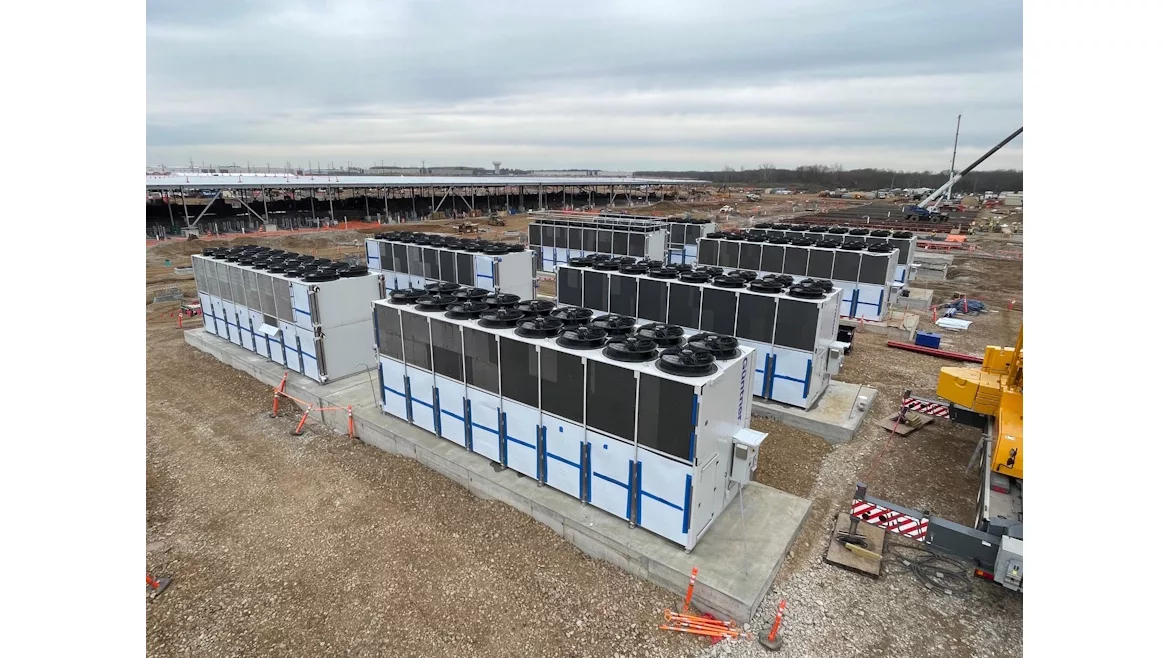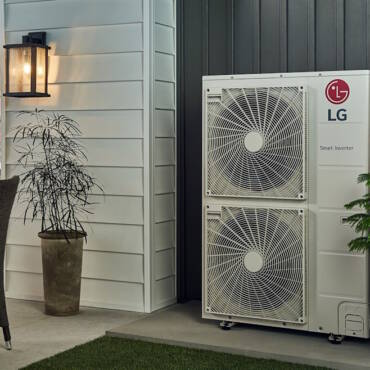The rapid expansion of the data center industry, fueled by cloud-based services and data-intensive technologies like AI, has led to growing energy demands and environmental challenges. In fact, data centers currently consume up to 1.5% of global electricity, up nearly 12% per year over the past five years.
Key cooling innovations—such as immersion cooling, adiabatic systems, and natural refrigerants—are helping to address these issues by improving energy efficiency, reducing water use, and minimizing environmental impact. Additionally, strategies to repurpose excess heat are transforming waste into valuable resources. Advanced cooling solutions are critical for ensuring data centers remain reliable, sustainable, and adaptable to future demands.
The Importance of Reliability
Fault-free, efficient cooling systems are essential for the continuous operation of data centers. Even a brief period of downtime can have major financial consequences for data centers’ corporate end users. According to one estimate, an outage costs businesses hundreds of thousands of dollars per hour on average, rising to as much as $6 million per hour, depending on the industry. A critical factor in maintaining reliability is the performance of a data center’s cooling system. High temperatures can damage IT cooling equipment, leading to costly failures.
Efficient thermal management, on the other hand, ensures that electronic components operate within their optimal temperature ranges. To achieve this, advanced testing processes are essential. Laboratories dedicated to cooling technologies perform rigorous analyses to validate components’ resistance to wear and environmental stressors, such as corrosion. Techniques like salt spray testing and digital microscopy assess how materials will withstand various conditions over time.
By leveraging engineering expertise and comprehensive testing, cooling systems can be optimized during the design phase to meet the unique demands of data centers. This approach not only improves system performance but also ensures dependability in mission-critical applications.
Tailoring Cooling Solutions for Every Data Center Need
Cooling systems must adapt to the wide range of data center configurations, from small, on-premise computer rooms to massive hyperscale facilities housing thousands of servers. The diversity in data center designs and requirements necessitates flexible and efficient cooling solutions.
The ongoing expansion of data center infrastructure underscores this need. Big Tech companies are investing billions to construct facilities across the U.S. This widespread growth highlights the importance of tailoring cooling systems to meet the specific demands of each facility.
Looking for quick answers on air conditioning, heating and refrigeration topics?
Try Ask ACHR NEWS, our new smart AI search tool.
Ask ACHR NEWS
Addressing Sustainability in Data Center Operations
Data centers are responsible for 2% of global greenhouse gases, and there is growing pressure both within and outside the industry to reduce their harmful impact on the environment. In Europe, initiatives like the Climate Neutral Data Centre Pact aim to achieve net-zero operations by 2030. Regulatory measures, such as the EU’s new Energy Efficiency Directive and proposed U.S. climate-related disclosure rules, further emphasize the push for greener practices in data centers.
Three cooling solutions gaining significant momentum are immersion cooling, adiabatic cooling, and natural refrigerants. Each offers unique benefits that help reduce energy consumption, minimize water use, and lower greenhouse gas emissions—critical factors for ensuring the long-term viability of data centers.
Getting Efficient with Immersion Cooling
Immersion cooling involves submerging servers in a dielectric fluid that efficiently conducts heat without the use of electricity. This approach delivers significantly greater energy efficiency, and a smaller carbon footprint compared to traditional air-based systems, transferring heat away from servers up to 1,200 times more effectively.
Technologies like immersion cooling and direct chip cooling are becoming more common as energy density increases. These technologies can also allow systems to operate at higher temperatures without the need for compressors. This results in simpler, more energy-efficient operations. As data centers continue to expand globally, these innovations are poised to play a vital role in balancing operational growth with environmental responsibility.
Saving Water with Adiabatic Cooling
Water scarcity is an increasingly urgent global issue, driven by rising demand, pollution, and the effects of climate change. As a result, there is increasing pressure, both regulatory and ethical, on companies to do all they can to cut water consumption. There is also a financial imperative– the laws of supply and demand apply equally to Earth’s most precious resource, and water prices are rising for many.
Adiabatic cooling systems offer a viable solution for industries looking to cut water consumption without compromising efficiency. These systems use pre-cooling humidification pads that activate only when ambient temperatures exceed a certain threshold. Intelligent control mechanisms ensure precise monitoring of water application, fan speed, and environmental conditions, enabling maximum efficiency while conserving resources.
Using Natural Refrigerants
Natural refrigerants—such as ammonia, propane, and carbon dioxide—are emerging as sustainable alternatives to synthetic options, driven by their minimal environmental impact. The phasedown of hydrofluorocarbons (HFCs) under the U.S. AIM Act has accelerated the industry’s transition to these natural solutions, which have little to no global warming potential (GWP) and do not deplete the ozone layer.
Operationally, natural refrigerants can also provide performance advantages. They are highly efficient, and their availability and lower risk of future restrictions make them a cost-effective, future-proof choice for data centers and other industries looking to invest in long-term solutions that balance sustainability with economic considerations.
Making the Most of Data Centers’ Excess Heat
The substantial heat generated by data centers is often seen as a byproduct, but it is increasingly viewed as a valuable resource in sustainability initiatives. In Germany, the recently passed Energy Efficiency Act requires data centers to actively reduce waste heat and integrate reused energy into heat networks. Similar regulations may be introduced in other parts of the world, especially in Europe, where district heating networks are well established.
As the demand for data centers grows alongside the need for sustainable energy practices, waste heat utilization will play an increasingly significant role in achieving both operational efficiency and environmental goals.
Looking Ahead to Smarter Cooling Solutions
Meeting the evolving cooling needs of data centers requires a focus on energy efficiency, reliability, and adaptability. Innovative systems and technologies, like immersion cooling, adiabatic cooling, and the use of natural refrigerants, are essential to optimize plant designs while addressing sustainability challenges. By prioritizing advanced cooling strategies, operators can ensure efficient performance, reduce environmental impact, and support the long-term growth of the data center industry.
Whether you require installation, repair, or maintenance, our technicians will assist you with top-quality service at any time of the day or night. Take comfort in knowing your indoor air quality is the best it can be with MOE heating & cooling services Ontario's solution for heating, air conditioning, and ventilation that’s cooler than the rest.
Contact us to schedule a visit. Our qualified team of technicians, are always ready to help you and guide you for heating and cooling issues. Weather you want to replace an old furnace or install a brand new air conditioner, we are here to help you. Our main office is at Kitchener but we can service most of Ontario's cities
Source link



